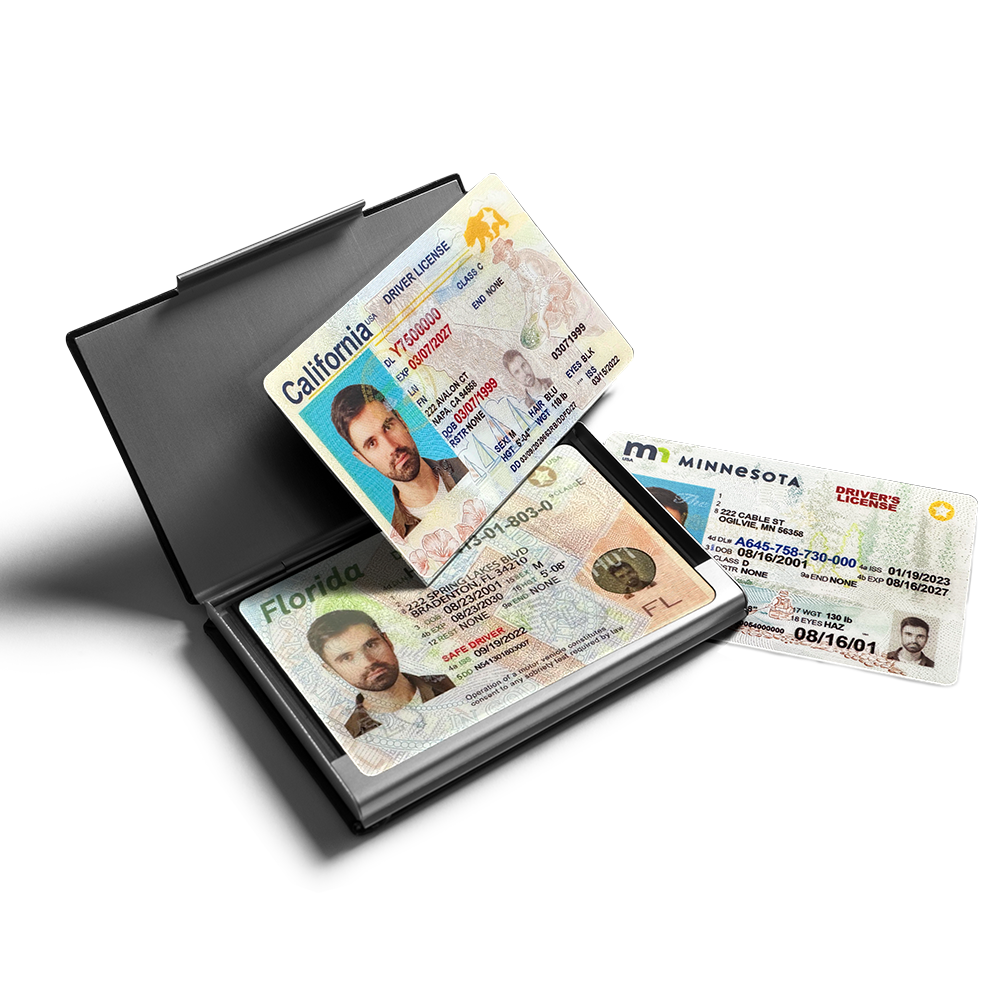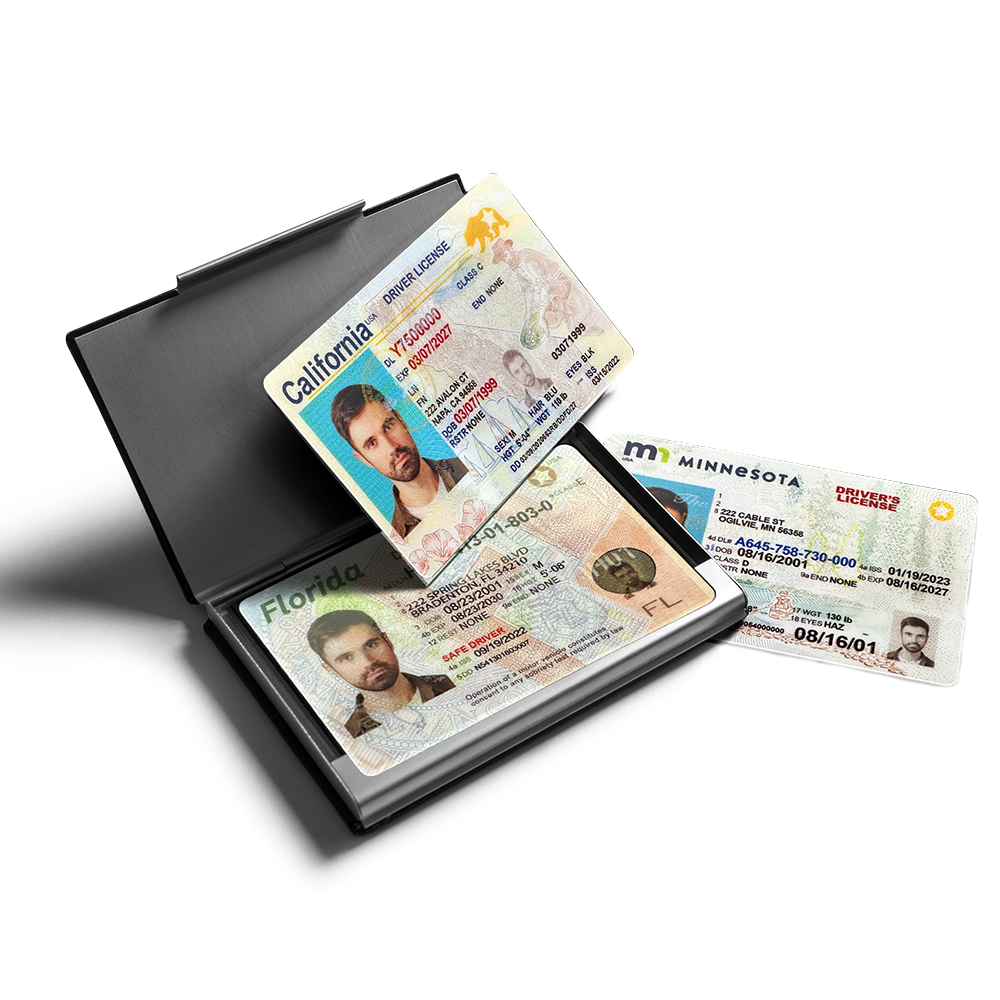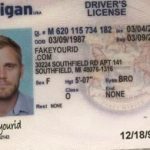In the digital – centric landscape of 2025, the issue of fake IDs remains a persistent concern for various entities, including businesses, law – enforcement agencies, and event organizers. With the advancement of technology, both fake ID creators and legitimate ID detectors are constantly evolving their methods. Here are some of the new ways to spot a fake ID in 2025.
1. Holographic and Optical Variable Features
In 2025, most legitimate IDs are equipped with highly sophisticated holographic and optical variable features. These features are extremely difficult to replicate accurately. When inspecting an ID, look for holograms that change in appearance when viewed from different angles. For example, a state – issued driver’s license might have a hologram of the state’s seal that shifts colors and shapes as you tilt the ID. If the hologram appears flat or the colors are dull and don’t change as expected, it could be a sign of a fake. Additionally, optical variable ink is often used on IDs. This ink changes color when the ID is tilted, and counterfeiters usually have a hard time mimicking this effect precisely.

2. Microprinting and Nanoprinting
Microprinting has been around for a while, but in 2025, it has reached new levels of sophistication. Tiny text or patterns are printed on IDs, which are only visible under magnification. These microprinted elements can include the holder’s name, ID number, or other identifying information in a repeated pattern. A fake ID may either lack this microprinting or have it in a sub – standard form. Nanoprinting, a more recent development, involves printing at the nanoscale level. Some IDs now have nanoprinted watermarks or security features that are almost impossible to replicate without advanced and expensive equipment. A simple magnifying glass can be a useful tool to check for the presence and quality of microprinting, but for nanoprinting, more specialized equipment may be required.
3. Digital Authentication
Many IDs in 2025 are designed with digital authentication features. This could involve a built – in RFID (Radio – Frequency Identification) chip or a near – field communication (NFC) tag. When an ID is presented, it can be scanned using a specialized reader. The reader communicates with the chip or tag to verify the authenticity of the ID. If the ID is fake, it may not communicate properly with the reader, or the information it provides may not match the details on the physical ID. For example, the date of birth stored in the chip should match the date of birth printed on the ID card. Some IDs also have a digital signature embedded in them, which can be verified using cryptographic algorithms. This ensures that the ID has not been tampered with since it was issued.
4. Material and Texture Analysis
The materials used in genuine IDs are of high quality and have specific textures. In 2025, new types of polymers and composite materials are being used for ID cards. A real ID card will have a smooth yet slightly textured surface that feels durable. Fake IDs, on the other hand, may be made from cheaper materials that have a different feel. For example, a fake ID might be too glossy or too thin compared to a legitimate one. Additionally, the lamination on a real ID is usually seamless and of high quality, while a fake ID may have visible air bubbles, uneven lamination, or a lower – quality lamination material.
5. Facial Recognition and Biometric Data
Biometric data has become an integral part of ID verification in 2025. Most IDs now come with a high – resolution facial image that is used for facial recognition. When an ID is presented, the person’s face can be compared to the image on the ID using advanced facial recognition software. If there are significant differences in facial features, such as the shape of the eyes, nose, or mouth, it could be a sign of a fake ID. Some IDs also store additional biometric data, such as fingerprints or iris patterns. While this data may not be visible on the surface of the ID, it can be used for more in – depth verification when necessary.
6. QR Code and Barcode Verification
Many IDs in 2025 are equipped with QR codes or barcodes. These codes contain important information about the ID holder, such as their name, address, and ID number. When scanned using a mobile device or a dedicated scanner, the information in the code should match the details on the physical ID. A fake ID may have a QR code or barcode that is either missing, damaged, or contains incorrect information. Additionally, some IDs have dynamic QR codes that change over time, adding an extra layer of security. If the QR code on an ID does not function properly or does not match the other details on the ID, it is likely a fake.
7. UV and Infrared Detection
Under ultraviolet (UV) light, legitimate IDs often have hidden features that become visible. These can include UV – reactive inks, watermarks, or security patterns. For example, a UV – reactive ink might glow a specific color under UV light, indicating the authenticity of the ID. Infrared (IR) detection is also becoming more common. Some IDs have IR – sensitive elements that are not visible to the naked eye but can be detected using IR – capable devices. Fake IDs may lack these UV or IR features, or the features they do have may not match the expected patterns or colors.
Common Problems and Solutions
- Problem: Lack of Proper Equipment
Many businesses, especially smaller ones, may not have access to advanced ID – detection equipment such as RFID readers, UV lights, or magnifying devices.
Solution: Invest in basic ID – checking tools like magnifying glasses and UV flashlights. These are relatively inexpensive and can help in detecting some of the more obvious signs of a fake ID. For more advanced features like RFID or biometric verification, consider partnering with larger security companies or using mobile – based ID – verification apps that can perform some of these functions. - Problem: Trained Staff Shortage
Employees may not be well – trained in the new ID – detection methods. They may not know how to properly use the equipment or recognize the signs of a fake ID.
Solution: Provide regular training sessions for employees on the latest ID – detection techniques. Use real – life examples of fake and genuine IDs to demonstrate the differences. You can also create a reference guide that employees can keep on hand for quick reference during ID checks. - Problem: Counterfeiters Adapting Quickly
Counterfeiters are constantly trying to keep up with new security features and may be able to replicate some of them. This makes it harder to distinguish between real and fake IDs.
Solution: Stay updated on the latest trends in ID security and counterfeiting. Subscribe to industry newsletters and participate in security – related forums. Law – enforcement agencies can also play a role in sharing information about new types of fake IDs and the methods used to create them. Additionally, some ID – issuing authorities are constantly updating their security features, so it’s important to be aware of these changes. - Problem: Privacy Concerns with Biometric Data
When using biometric data for ID verification, there are privacy concerns. Some people may be reluctant to have their fingerprints or iris patterns scanned.
Solution: Ensure that proper privacy policies are in place. Explain to customers or ID – holders how their biometric data will be used, stored, and protected. Use encryption techniques to safeguard the data and limit access to authorized personnel only. Also, provide alternative ID – verification methods for those who are uncomfortable with biometric data collection. - Problem: False Positives
Advanced ID – detection methods may sometimes produce false positives, where a genuine ID is flagged as fake. This can cause inconvenience to the ID – holder and lead to customer dissatisfaction.
Solution: Calibrate the ID – detection equipment regularly to ensure its accuracy. Have a secondary verification process in place for IDs that are flagged as potentially fake. This could involve a manual re – check by a trained staff member or using additional verification methods to confirm the authenticity of the ID.
Fake ID Pricing
unit price: $109
| Order Quantity | Price Per Card |
|---|---|
| 2-3 | $89 |
| 4-9 | $69 |
| 10+ | $66 |


